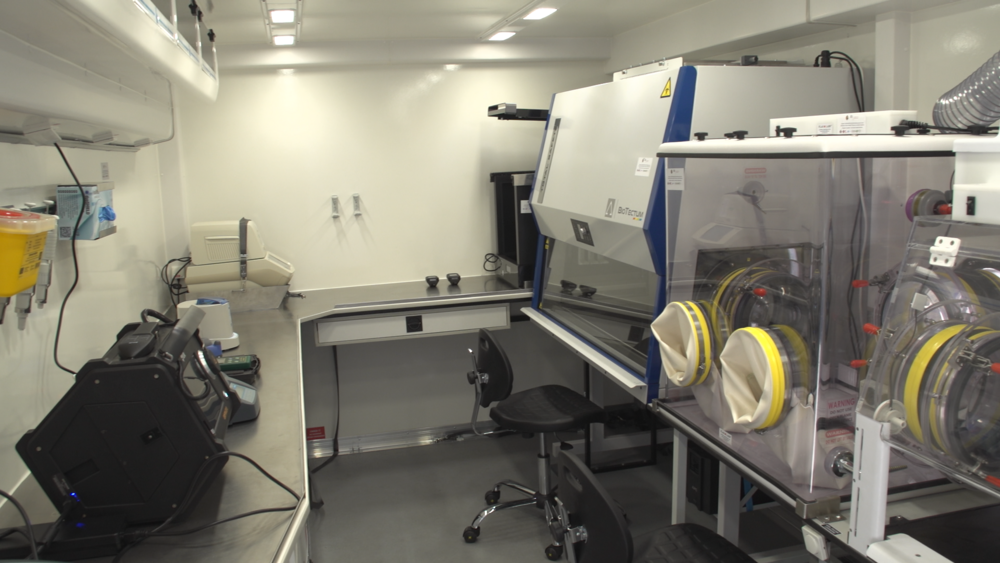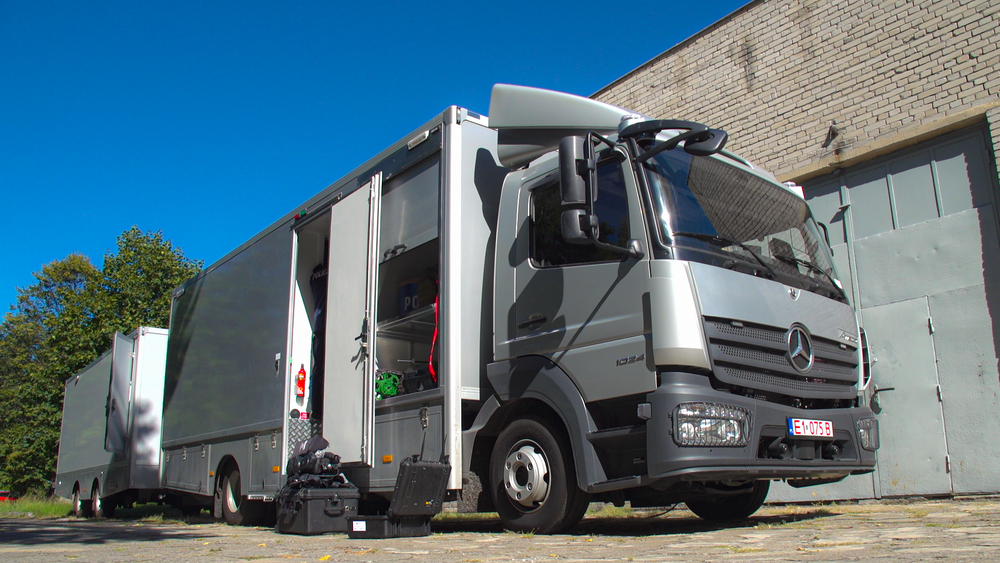ZEUS-2 looks like a truck from the outside, but inside there is a real laboratory, including, among other things: a drone, a specialised robot that enables remote terrain reconnaissance, a special suit and even a decontamination chamber (for contamination elimination) and a sanitary compartment on the trailer.
The developed kit provides a wide analytical range and the ability to eliminate contamination of both people and equipment, as well as a high autonomy of the performed tasks, while maintaining the highest safety standards
– Dr hab. Michał Bijak, the project coordinator on the part of the University of Lodz, Head of the Biohazard Prevention Centre of the University of Lodz
ZEUS-2 – a laboratory worth PLN 25 million
ZEUS-2 is a mobile laboratory for the analysis and elimination of various types of contamination. With its help, the police want to support counter-terrorism operations of CBRN-E type (chemical, biological, radiological, nuclear – explosives), i.e. those resulting from the use of chemical, biological, radiological, nuclear weapons and explosives.
The drone and robot are expected to facilitate remote site reconnaissance, initial CBRN-E threat assessment and the collection and transport of samples for analysis in the mobile laboratory. In the laboratory, we will determine the type of an agent and explosives used.
The University of Lodz was responsible for developing an innovative detection subsystem for biological agents based on modern molecular biology techniques. This system allows rapid and reliable identification of infectious agents. The designed and optimised kit allows simultaneous identification of the agent and determination of its antibiotic resistance profile – it is not available commercially
– Dr hab. Michał Bijak, University of Lodz.
The already mentioned protective explosion-proof EOD suit (Explosion Ordnance Disposal) with ballistic plates is on the equipment of sapper troops. Its purpose is to protect against factors acting during an explosion: shrapnel, pressure, heat and shock waves, as well as during a fall. The police version is additionally equipped with a breathing apparatus, so it also protects against the effects of CBRN-E incidents.
Since 17 April this year ZEUS-2 has been a part of the equipment of the Central Counter-Terrorism Subunit of the Police “BOA”. It was presented at the international trade fair "POLSECURE" where it aroused great interest.
New developments used in ZEUS-2
The project made use the latest commercially available technology (including a CBRN-EOD suit, a mobile gas chromatograph with mass spectrometry, FTIR and Raman spectrometers, gamma-ray spectrometers, an X-ray spectrometer) and developed new innovative solutions, including:
- a new type of filter protective clothing,
- feeding and distribution system for contaminated samples,
- a system for decontamination of sensitive equipment,
- biohazard diagnostic system.
This is yet another such project carried out at the Biohazard Prevention Centre at the University of Lodz. The team, in cooperation with a number of national and international entities and institutions, has successfully implemented projects to improve the security of society against CBRN-type threats.
We have previously reported on the following projects led by the Centre:
- Safe Stadium – Exercises of Services in Cooperation with the University of Lodz
- HoloZcan – Portable Detector of Bacteria, Viruses and Other Biological Hazards
- Safe Sports Stadiums – Project with Real Madrid
The project title: "Mobilny zestaw do analizy oraz likwidacji skażeń, wspierający działania kontrterrorystyczne na miejscu zdarzenia CBRN-E" [Mobile analysis and decontamination kit to support counter-terrorism operations at the scene of a CBRN-E incident]
Acronym: BOA CBRN
Contract no: DOB-BIO9/01/03/2018
The project is funded by the National Centre for Research and Development
Consortium implementing the project
Coordinator: Military Institute of Chemistry and Radiometry
Partners in the project:
- University of Lodz,
- Military Institute of Armament Technology
- Military Institute of Hygiene and Epidemiology,
- War Studies University,
- PSO MASKPOL S.A.,
- NORDCOM Sp. z o.o.,
- AMZ Bis Sp. z o.o.
Edit: Honorata Ogieniewska, Communications and PR Centre, University of Lodz
Photos and source material about the projects: the University of Lodz Biohazard Prevention Centre and moto.pl


